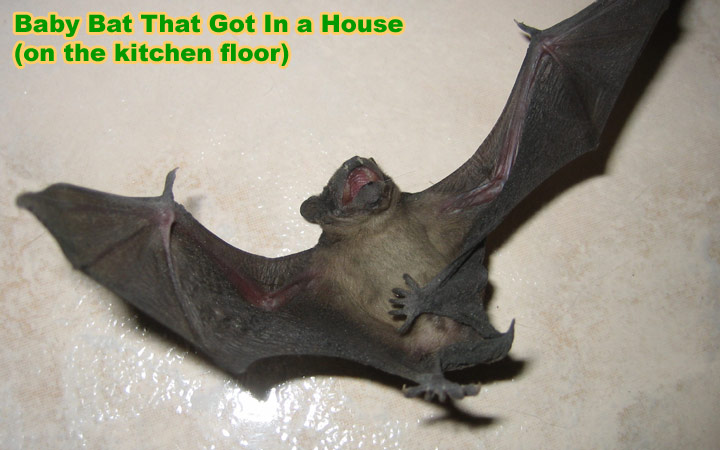
A Comprehensive Guide to Caring for a Baby Bat
Introduction
Bats, often perceived as creatures of the night, play a crucial role in our ecosystem as pollinators and pest controllers. However, when baby bats are orphaned or separated from their mothers, they become vulnerable and require specialized care to survive. This article provides a comprehensive guide to caring for a baby bat, ensuring its well-being and maximizing its chances of successful rehabilitation.
Identifying a Baby Bat
Baby bats, also known as pups, are typically born between May and August. They are small, weighing less than an ounce, and have soft, fuzzy fur. Their ears are usually large and pointed, and their eyes are still closed or partially open. If you find a baby bat, it is essential to determine its species to provide appropriate care.
Determining the Species
There are over 1,400 species of bats worldwide, each with unique characteristics. Identifying the species of a baby bat is crucial for providing species-specific care. Here are some common bat species found in North America:
- Big brown bat: Brown fur, large ears, and a wingspan of 12-15 inches.
- Little brown bat: Smaller than the big brown bat, with a wingspan of 8-10 inches.
- Red bat: Reddish-brown fur, a wingspan of 10-12 inches, and a distinctive reddish tinge on its face.
- Hoary bat: Grayish-brown fur, a wingspan of 13-16 inches, and a white or frosted appearance on its back.
- Silver-haired bat: Dark brown fur with silver tips, a wingspan of 10-12 inches, and a distinctive silver sheen.
Assessing the Baby Bat’s Condition
Once you have identified the species, assess the baby bat’s condition. Check for any injuries, such as cuts, bruises, or broken bones. Examine its eyes, ears, and mouth for any discharge or abnormalities. If the baby bat is cold to the touch, it may be hypothermic and require immediate warming.
Providing Shelter
Baby bats require a warm, dark, and humid environment to thrive. Create a temporary shelter using a small box lined with soft fabric or paper towels. Place the box in a quiet and undisturbed area, away from direct sunlight and drafts. Maintain a temperature of 80-90°F (27-32°C) and a humidity level of 50-60% using a humidifier or damp towels.
Feeding the Baby Bat
Baby bats are dependent on their mothers’ milk for nourishment. If the mother is unavailable, you will need to provide a milk substitute. Esbilac, a powdered milk formula specifically designed for baby mammals, is a suitable option. Mix the formula according to the instructions and feed the baby bat using a syringe or a dropper.
Feeding Schedule
The feeding schedule for a baby bat depends on its age and species. Generally, newborn pups need to be fed every 2-3 hours, while older pups can be fed every 4-6 hours. As the pup grows, gradually increase the amount of formula and reduce the frequency of feedings.
Warming the Baby Bat
Baby bats are prone to hypothermia, especially if they are cold to the touch. If the baby bat is hypothermic, gently warm it using a heating pad set to low or a warm water bottle wrapped in a towel. Place the baby bat on the heat source and monitor its temperature closely. Avoid using direct heat, as this can burn the baby bat.
Hydrating the Baby Bat
Baby bats can become dehydrated quickly. Offer the baby bat water using a syringe or a dropper. If the baby bat is reluctant to drink, gently rub a drop of water on its lips to stimulate its thirst.
Cleaning the Baby Bat
Baby bats do not require frequent bathing. However, it is important to keep their fur clean and free of debris. Use a soft, damp cloth to gently wipe the baby bat’s fur. Avoid using soap or water, as this can irritate the baby bat’s skin.
Socialization
Baby bats are social creatures and require interaction with other bats for proper development. If possible, place the baby bat in a cage with other orphaned bats of the same species. If this is not possible, provide the baby bat with a soft toy or a stuffed animal for comfort and companionship.
Rehabilitation and Release
The ultimate goal of caring for a baby bat is to rehabilitate it and release it back into the wild. Once the baby bat is old enough and has developed the necessary skills, it should be released in an area with suitable habitat and food sources. Consult with a licensed wildlife rehabilitator for guidance on the release process.
Legal Considerations
In many areas, it is illegal to keep bats as pets. Before caring for a baby bat, check with your local wildlife authorities to ensure that you are complying with the law.
Conclusion
Caring for a baby bat is a rewarding but challenging experience. By following the guidelines outlined in this article, you can provide the baby bat with the necessary care and support to maximize its chances of survival and successful rehabilitation. Remember to always prioritize the well-being of the baby bat and seek professional assistance when needed.
